Last Updated on 6 months by Francis
Do you struggle with skincare concerns such as fine lines, wrinkles, or acne? If so, you may have come across two popular methods for achieving a youthful, glowing complexion: red light therapy and Retin A. While both methods have their dedicated followers, there is ongoing debate and confusion around which one is more effective and suitable for different skin types.
In this article, we’ll delve into the benefits, drawbacks, and effectiveness of red light therapy and Retin A in the context of skincare. We’ll discuss the mechanisms behind each method, the potential side effects, and real-life testimonials from individuals who have incorporated them into their routines. By the end of this article, you’ll have a better understanding of which method may be more suitable for your skincare needs.
Contents
Key Takeaways:
- Red light therapy and Retin A are two popular methods for achieving youthful, glowing skin
- There is ongoing debate and confusion on which one is more effective and suitable for different skin types
- In this article, we’ll explore the benefits, drawbacks, and effectiveness of red light therapy and Retin A in the context of skincare
- We’ll discuss the mechanisms behind each method, potential side effects, and real-life testimonials
- By the end of this article, you’ll have a better understanding of which method may be more suitable for your skincare needs
Understanding Red Light Therapy
Red light therapy is a non-invasive treatment that harnesses the power of red LED lights to penetrate the skin at different wavelengths. This therapy has been found to have numerous benefits for the skin, including improved collagen production, enhanced skin texture, and cellular rejuvenation.
Unlike other skincare treatments, red light therapy does not involve any painful procedures or chemicals. Instead, the red LED lights stimulate the production of ATP, a molecule that powers cellular processes and helps improve skin health.
Studies have shown that red light therapy can be effective in reducing fine lines and wrinkles, improving skin tone, and promoting overall skin rejuvenation. This makes it a popular choice for individuals looking to enhance their natural beauty without undergoing invasive procedures.

Benefits of Red Light Therapy
Red light therapy has numerous benefits beyond just improving collagen production and skin rejuvenation. It has been shown to improve blood circulation, reduce inflammation, and accelerate wound healing. It also has potential in managing conditions like psoriasis, rosacea, and eczema.
One of the major benefits of red light therapy is its ability to promote collagen production. Collagen is a protein that provides structure and elasticity to the skin. As we age, collagen production decreases, leading to the formation of fine lines and wrinkles. By stimulating collagen production, red light therapy can help combat the effects of aging on the skin.
In addition to its anti-aging effects, red light therapy has been found to improve skin texture and reduce the appearance of scars. It can also be used to treat acne by reducing inflammation and promoting healing.
Overall, red light therapy is a safe and non-invasive method for improving skin health. However, it is important to consult with a skincare professional before incorporating red light therapy into your routine to ensure that it is safe and suitable for your skin type and concerns.
Exploring Retin A
Retin A, also known as tretinoin, is a topical medication derived from vitamin A. The benefits of Retin A in skincare are numerous, making it a popular choice among those seeking anti-aging solutions.
Benefits of Retin A:
- Reduces fine lines and wrinkles: Retin A has been found to diminish the appearance of fine lines and wrinkles, making it a great choice for those seeking to improve their skin’s texture.
- Increases cell turnover: Retin A accelerates the rate at which skin cells turnover, which can help to improve the overall appearance and health of the skin.
- Treats acne: Retin A is a commonly prescribed medication for those with acne-prone skin, as it helps to unclog pores and reduce inflammation.
Retin A can be a powerful addition to any skincare routine, but it is essential to use it correctly to avoid potential side effects. Consulting with a dermatologist is recommended to determine if Retin A is right for you and to develop a personalized treatment plan.
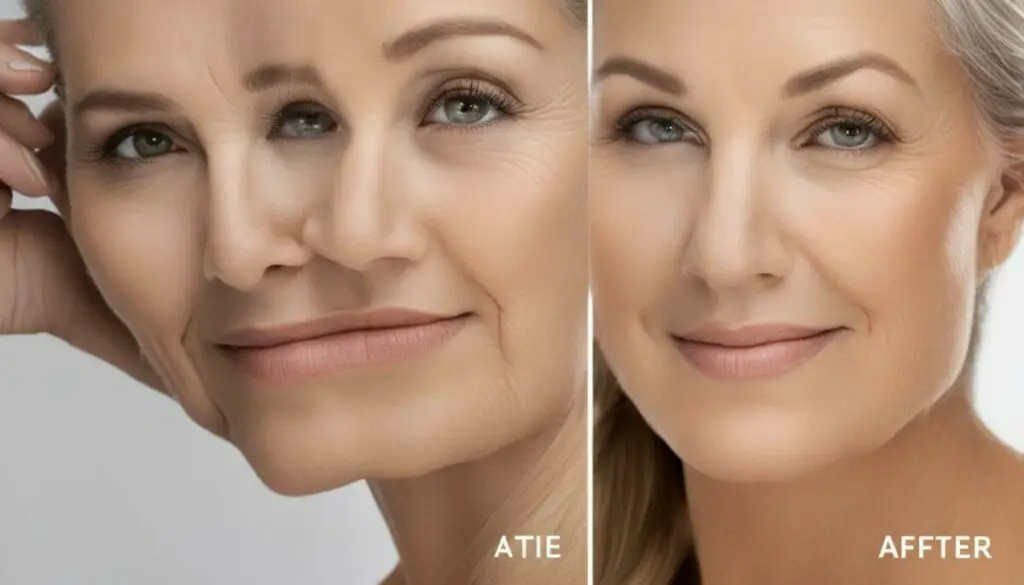
Comparing the Effectiveness
Red light therapy and Retin A are two popular methods for achieving youthful, rejuvenated skin. While both methods have their benefits, it is important to compare their effectiveness to determine which may be better suited for individual skincare needs.
Red light therapy:
Studies have shown that red light therapy can promote collagen production, improve skin texture and tone, and increase blood circulation. It has also been found to accelerate wound healing and reduce inflammation. However, the results of red light therapy may take longer to manifest compared to Retin A, and it may not be as effective for treating acne or reducing the appearance of deep wrinkles.
Retin A:
Retin A has been extensively studied and has been found to increase cell turnover, reduce the appearance of fine lines and wrinkles, and improve overall skin texture. It is also effective in treating acne and other skin concerns. However, Retin A can be harsh on the skin, causing redness, dryness, and peeling in some individuals.
Ultimately, the effectiveness of red light therapy and Retin A depends on individual skin concerns and desired outcomes. Consulting with a dermatologist or skincare professional can help determine which method may be more effective for individual needs. It is also worth noting that combining both red light therapy and Retin A in a skincare routine may have synergistic effects and further enhance overall skin health.
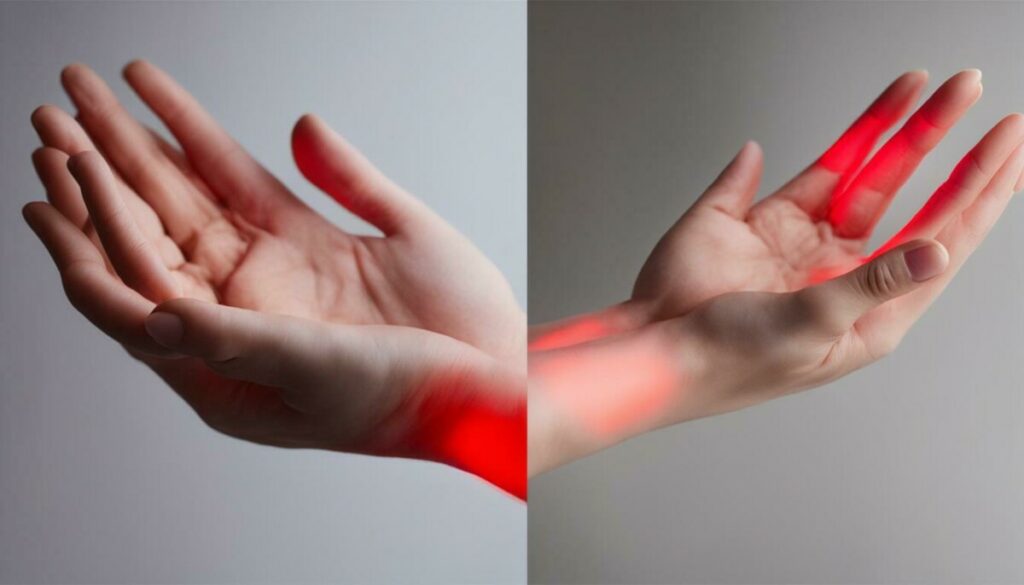
Benefits of Red Light Therapy
Red light therapy offers numerous benefits beyond skin rejuvenation and collagen production. Its ability to penetrate the skin at different wavelengths enables it to stimulate cellular activity, improve blood circulation, and reduce inflammation. Red light therapy has been found to promote wound healing and manage various skin conditions like psoriasis, rosacea, and eczema.
Red light therapy has been shown to be effective in reducing joint pain and inflammation related to arthritis. A study conducted on elderly patients with knee osteoarthritis found that red light therapy significantly reduced their pain and improved their mobility.
Another study found red light therapy to be effective in promoting hair regrowth and preventing hair loss. The therapy stimulates blood flow to the hair follicles, providing them with essential nutrients and oxygen necessary for healthy hair growth.
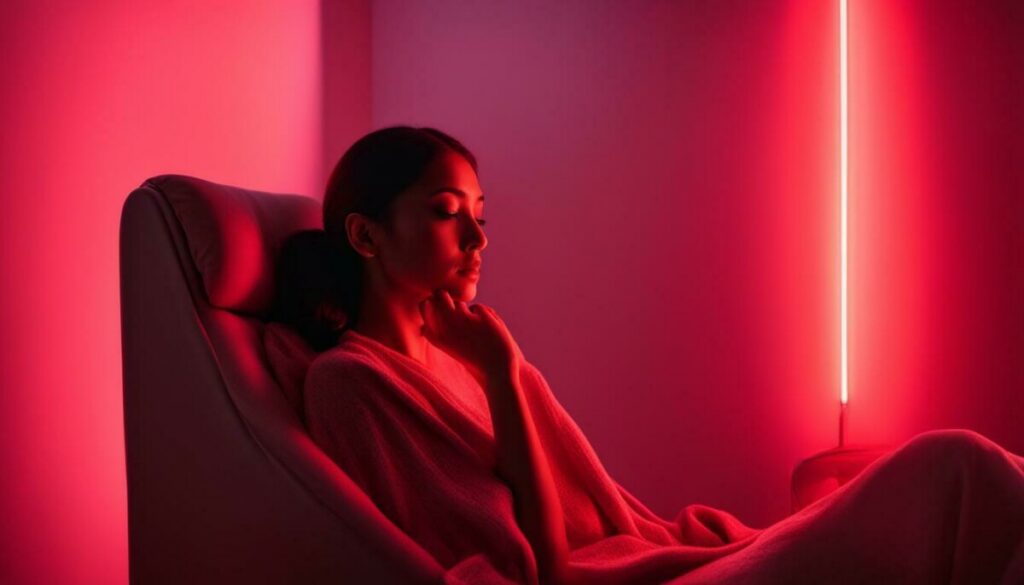
Red light therapy has also been found to improve sleep quality and reduce symptoms of depression and anxiety. The therapy stimulates the production of serotonin, a neurotransmitter responsible for regulating mood and sleep.
Overall, red light therapy is a non-invasive, painless, and safe treatment option with numerous health benefits.
The Advantages of Retin A
Retin A, also known as tretinoin, is a powerful anti-aging skincare treatment. Its benefits include reducing the appearance of fine lines and wrinkles, increasing cell turnover, and improving overall skin texture. It is particularly effective in treating acne and reducing the symptoms of rosacea.
Retin A works by increasing the production of collagen and elastin in the skin, which helps to smooth out wrinkles and fine lines. It also helps to regulate the production of oil in the skin, leading to a reduction in acne breakouts.
One of the key advantages of Retin A is its ability to reverse some of the damage caused by sun exposure. It has been found to decrease the appearance of sunspots and diminish the impact of photodamage on the skin.
While Retin A can produce impressive results, it may not be suitable for everyone. It is a prescription medication and should only be used under the guidance of a dermatologist or healthcare professional. Side effects may include dryness, redness, and skin peeling. These can be minimized by starting with a low concentration of the medication and gradually increasing it over time.

Incorporating Retin A into your skincare routine can lead to significant improvements in the appearance of your skin. Consult with a dermatologist to determine the most appropriate way to use Retin A based on your individual skin concerns and history.
Side Effects and Precautions
While red light therapy and Retin A offer benefits for skin health, they can also have side effects that should not be ignored.
Red light therapy can cause eye damage if the eyes are not appropriately protected during treatment. Additionally, excessive exposure to red light therapy can lead to burns, blisters, or skin discoloration. Therefore, it is crucial to follow safety guidelines and avoid overusing this therapy to prevent adverse effects.
Retin A can be harsh on the skin, especially during the first few weeks of use. Common side effects include dryness, peeling, redness, and sensitivity. To minimize these effects, start by using Retin A only once or twice a week, gradually increasing the frequency over time. It is also essential to avoid sun exposure while using Retin A as it can make the skin more sensitive to the sun’s damaging effects.
Before incorporating red light therapy or Retin A into your skincare routine, consult with a dermatologist or skincare professional to determine if they are suitable for your skin type and concerns.

Skin Rejuvenation and Collagen Production: A Comparative Analysis
In terms of skin rejuvenation and collagen production, red light therapy and Retin A are two highly effective methods with unique mechanisms of action.
Red light therapy stimulates collagen production by penetrating the skin at different wavelengths, triggering the body’s natural healing response and promoting cellular rejuvenation. This therapy has also been found to improve skin texture, reduce inflammation, and boost blood circulation.
Retin A, on the other hand, works by increasing cell turnover and stimulating collagen production. This medication is widely used for its anti-aging properties, reducing the appearance of fine lines and wrinkles, and improving skin tone and texture.
While both methods achieve similar results, red light therapy may be more suitable for individuals with sensitive skin and those seeking a non-invasive approach. Retin A may be more effective for those with acne-prone skin and deep wrinkles.
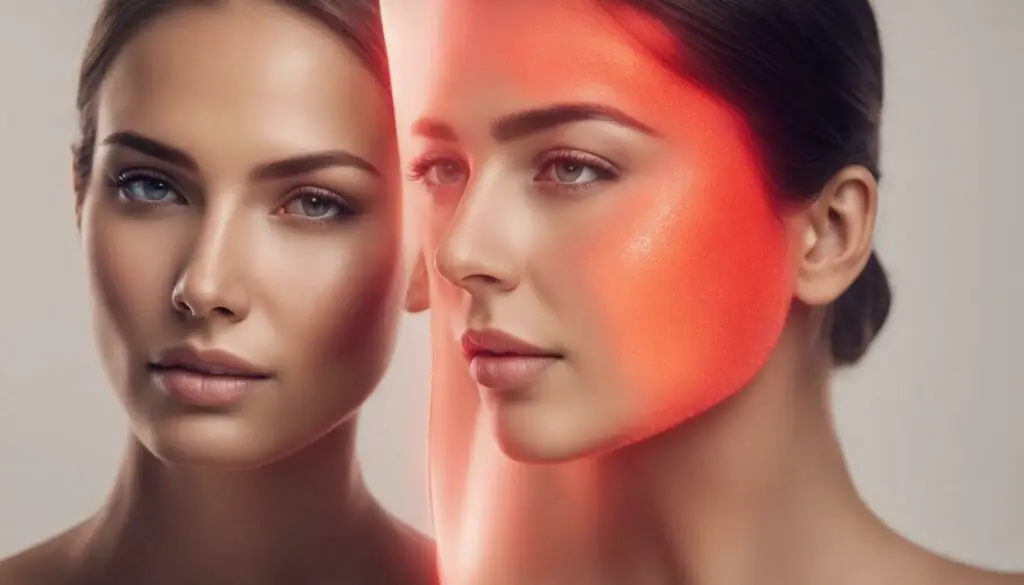
Scientific studies have shown that red light therapy and Retin A can both improve skin elasticity and promote collagen production. A study published in the Journal of Clinical and Aesthetic Dermatology found that red light therapy significantly increased collagen density in the skin of older adults after 12 weeks of treatment. Similarly, Retin A has been shown to increase collagen production and improve the appearance of fine lines and wrinkles.
Overall, the choice between red light therapy and Retin A for skin rejuvenation and collagen production ultimately depends on individual needs and preferences. Consulting with a dermatologist or skincare professional can help determine the best course of action.
Choosing the Right Method for Your Skincare Routine
When deciding between red light therapy and Retin A, it is essential to consider your skincare needs and preferences. Both methods offer unique benefits and can be effective in achieving desired results.
If you are looking to improve overall skin texture, promote collagen production, and reduce signs of aging, red light therapy may be the ideal choice. On the other hand, if you have acne-prone skin, want to reduce the appearance of fine lines and wrinkles, or fade dark spots and hyperpigmentation, Retin A may be more suitable for your needs.
It is also essential to consider your skin type when choosing between these methods. Red light therapy is gentle and non-invasive, making it a suitable option for sensitive skin. Retin A may be too harsh for some individuals and can cause dryness, redness, and peeling.
Ultimately, the choice between red light therapy and Retin A boils down to personal preference and desired outcomes. It is best to consult with a skincare professional or dermatologist to determine which method may be right for you.

Choosing the right skincare method for your routine is crucial in achieving desired results and maintaining healthy skin. Whether you opt for red light therapy, Retin A, or a combination of both, consistency and patience are key. Follow safe and proper usage guidelines, and always listen to your skin’s needs to ensure optimal results.
Integrating Red Light Therapy and Retin A
While red light therapy and Retin A are effective on their own, some individuals may find value in combining the two methods for enhanced skincare benefits. However, it’s essential to take precautions when using them together to avoid adverse effects.
It’s generally recommended to use Retin A at night and red light therapy in the morning since Retin A can increase skin sensitivity to light. Red light therapy can complement Retin A by accelerating collagen production and improving skin texture, making it an excellent addition to your skincare routine.
When combining red light therapy and Retin A, start slowly, and monitor how your skin responds. Begin with a low frequency of red light therapy and a low concentration of Retin A, gradually increasing over time.
It’s crucial to follow safe usage guidelines and consult with a skincare professional before trying this combination method. Remember, everyone’s skin is unique, and what works for one person may not work for another.

Real-Life Experiences and Testimonials
What better way to gain insight into the effectiveness of red light therapy and Retin A than to hear from real users? We’ve gathered a collection of testimonials and experiences from individuals who have incorporated these methods into their skincare routines.
“I was skeptical of red light therapy at first, but it has transformed my skin. I have noticed a significant improvement in my skin texture and reduced fine lines. It’s a gentle and non-invasive treatment that I can easily do at home.”
“Retin A has been a game-changer for my acne-prone skin. It has not only cleared up my breakouts but has also improved the overall appearance of my skin. It’s a staple in my skincare routine.”
“I use red light therapy and Retin A together, and it’s been a winning combination for me. I have noticed a significant improvement in my skin tone and texture, and my fine lines are less noticeable. I highly recommend trying them both.”
These real-life experiences and testimonials demonstrate the potential benefits of red light therapy and Retin A. Of course, individual results may vary, and it’s essential to consult with a skincare professional before incorporating these methods into your routine. But hearing from those who have tried and tested these treatments can provide valuable insights and inspiration.

Red Light Therapy vs Retin A: Which One Should You Choose?
After exploring the benefits, drawbacks, and effectiveness of red light therapy and Retin A, it is clear that both methods offer unique advantages for achieving healthy and radiant skin. Red light therapy has been found to stimulate collagen production, improve skin texture, and promote cellular rejuvenation. In contrast, Retin A is widely used for its anti-aging properties, reducing the appearance of wrinkles and fine lines while improving skin tone.
Ultimately, the choice between these two methods depends on individual preferences, skin concerns, and desired outcomes. To determine which method is best suited for your skincare routine, consult with a dermatologist or skincare professional for personalized advice.
It is worth noting that both red light therapy and Retin A can have potential side effects and require certain precautions. For red light therapy, the risks include eye damage and burns, while Retin A can cause dryness, redness, and skin peeling. It is essential to follow safe usage guidelines and recommendations from healthcare professionals to minimize the risk of adverse effects.
Regardless of which method you choose, consistency and patience are key when pursuing any skincare regimen. By incorporating the right products and methods into your routine, you can achieve healthy, youthful-looking skin that radiates beauty and confidence.

Incorporating red light therapy or Retin A into your skincare routine can be an excellent way to achieve your skincare goals. Whether you opt for red light therapy, Retin A, or a combination of the two, be sure to consult with a skincare professional and follow safe usage guidelines.
Final Thoughts:
Skincare is personal, and the choice between red light therapy and Retin A ultimately depends on individual preferences and concerns. It is crucial to consult with a dermatologist or skincare professional for personalized advice on selecting the right method for your routine.
Remember, both red light therapy and Retin A require time and consistency to achieve desired results. Incorporating these methods into your skincare routine may require patience, but the benefits are worth it.
When using red light therapy or Retin A, it is essential to follow safe usage guidelines and pay attention to potential side effects. Always conduct thorough research and seek medical advice if necessary.
Red light therapy and Retin A are powerful tools in the realm of skincare. By understanding their advantages, disadvantages, and effectiveness, you can make informed decisions about your skincare regimen. Remember to practice consistency, patience, and self-care, and your skin will thank you.
FAQ
What is red light therapy?
Red light therapy is a non-invasive treatment that uses red LED lights to penetrate the skin at different wavelengths. It stimulates collagen production, improves skin texture, and promotes cellular rejuvenation.
What is Retin A?
Retin A, also known as tretinoin, is a topical medication derived from vitamin A. It is widely used in skincare for reducing wrinkles, improving skin tone, and treating acne.
What are the benefits of red light therapy?
In addition to skin rejuvenation and collagen production, red light therapy can improve blood circulation, reduce inflammation, and accelerate wound healing. It may also be helpful for managing conditions like psoriasis, rosacea, and eczema.
What are the benefits of Retin A?
Retin A is known for reducing the appearance of fine lines and wrinkles, increasing cell turnover, and improving overall skin texture.
How effective are red light therapy and Retin A?
The effectiveness of red light therapy and Retin A can vary depending on individual skincare needs. Scientific studies and real-life testimonials can provide insights into their effectiveness for different concerns.
What are the side effects and precautions of red light therapy?
Red light therapy can have potential risks such as eye damage and burns. It is essential to follow safe usage guidelines and protect your eyes during the treatment.
What are the side effects and precautions of Retin A?
Retin A can cause side effects such as dryness, redness, and skin peeling. It is important to start with a low concentration, use sunscreen, and follow a proper skincare routine.
How do red light therapy and Retin A impact skin rejuvenation and collagen production?
Red light therapy stimulates collagen production and promotes cellular rejuvenation, while Retin A increases cell turnover and improves overall skin texture.
How can I choose the right method for my skincare routine?
Factors such as skin type, concerns, and personal preferences should be considered when selecting between red light therapy and Retin A. Consulting with a dermatologist or skincare professional can provide personalized advice.
Can red light therapy and Retin A be used together?
Some individuals may choose to integrate both red light therapy and Retin A into their skincare routine. It is important to follow safe usage guidelines and consider possible synergistic effects.
What do real-life experiences and testimonials say about red light therapy and Retin A?
Testimonials from individuals who have incorporated red light therapy and Retin A into their skincare routines can provide insights into their effectiveness and personal experiences.

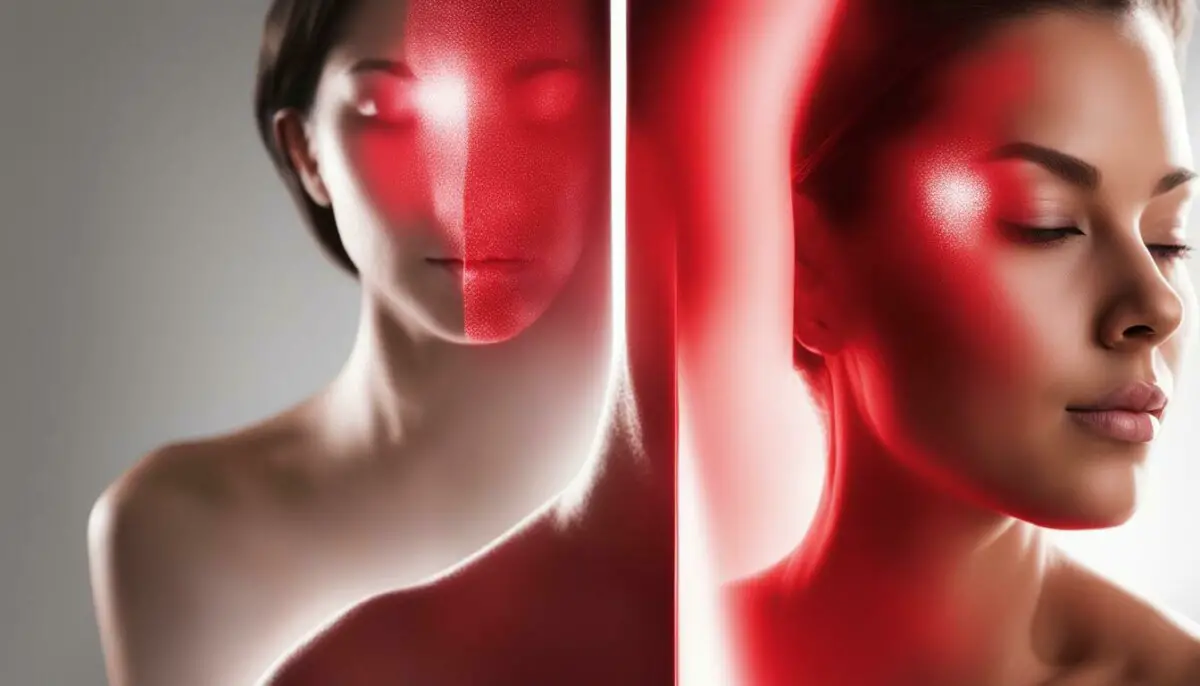
.jpg)

.jpg)




